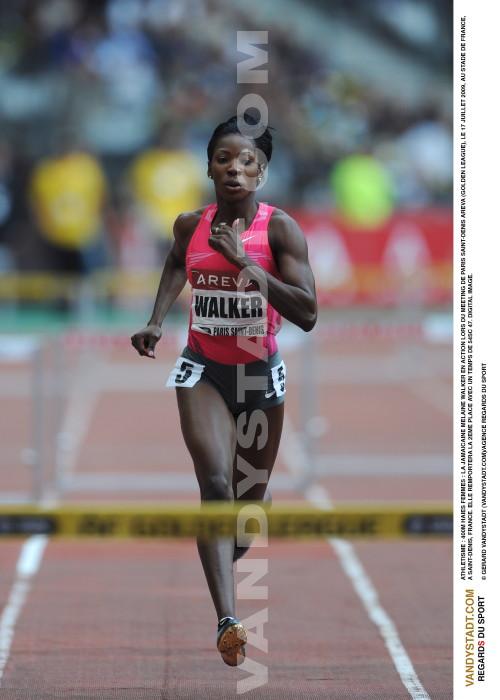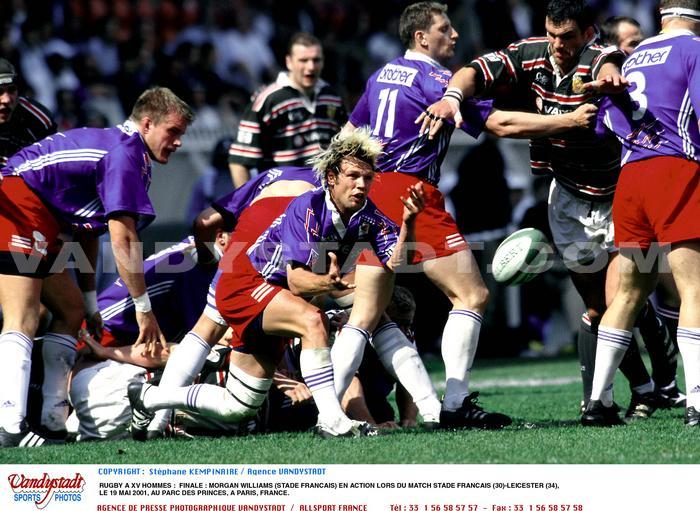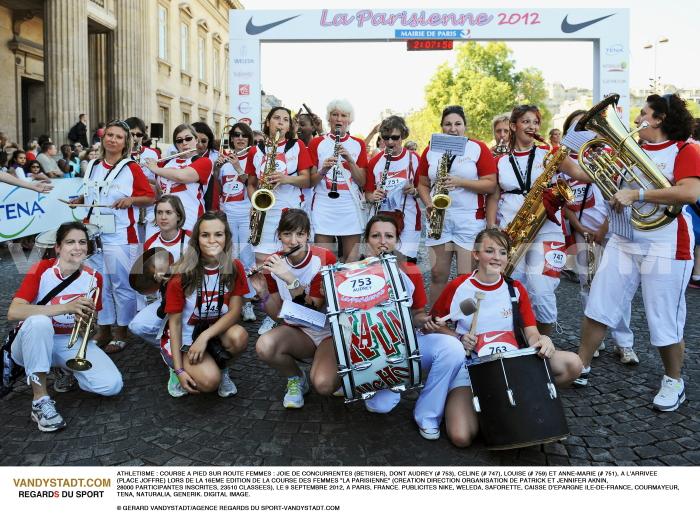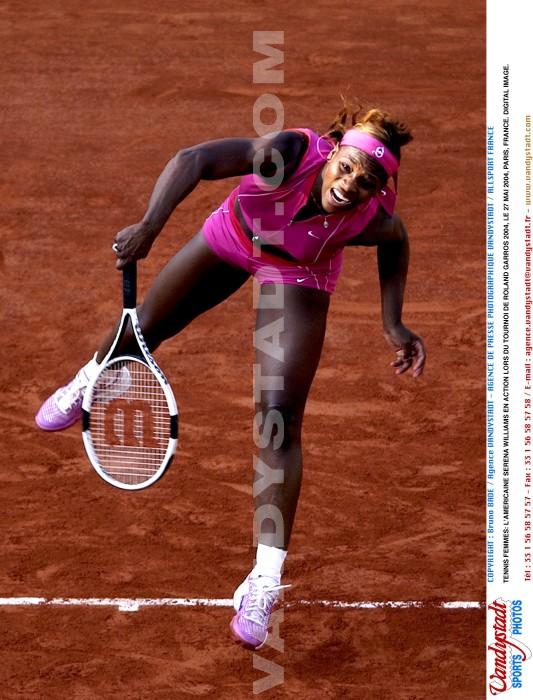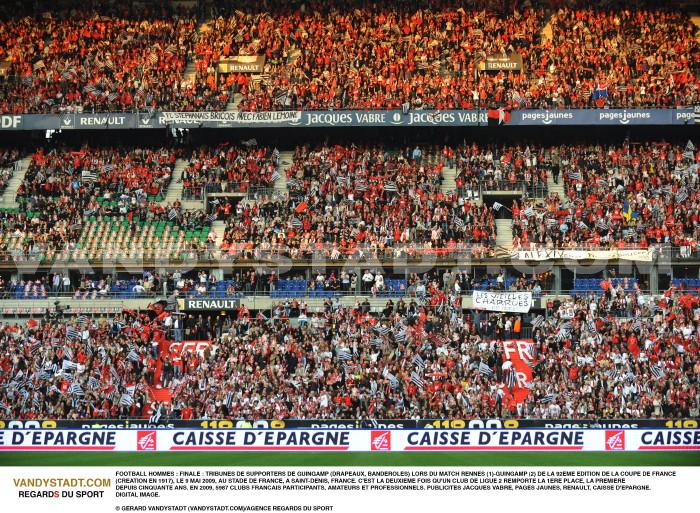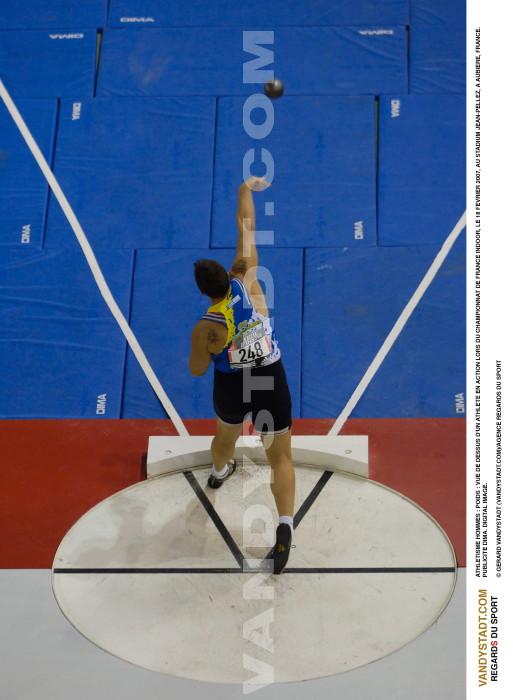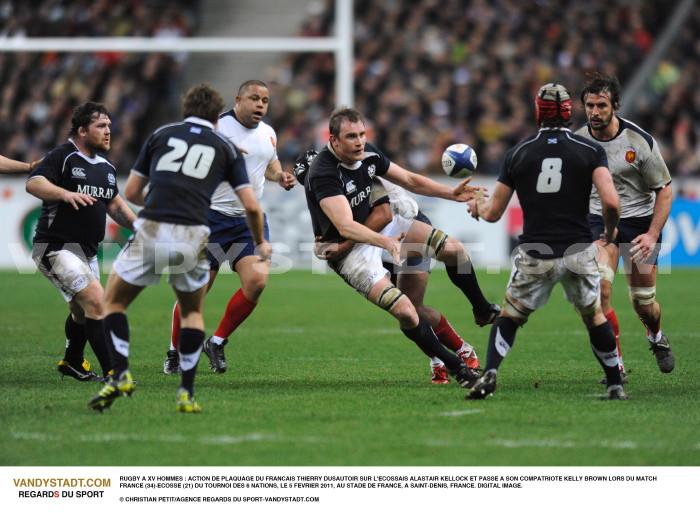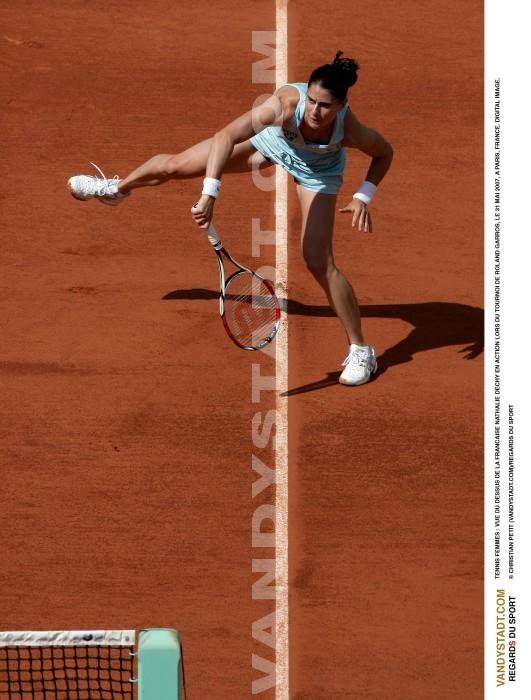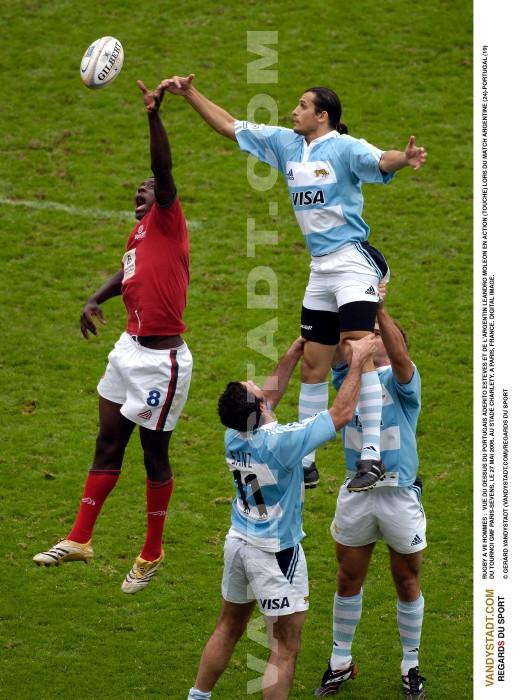Aviron - Rowing history
ROWING - Olympic Sports
![]()
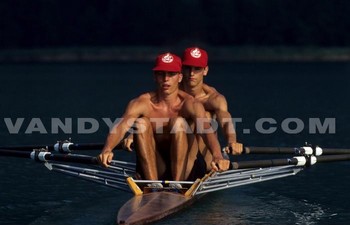
An oar is a lever used to propel and steer a boat on the water, composed of a long wooden handle an extended range.
HistoryAncient texts, we report the testimony of ancient confrontations rowing in Egypt and Rome.Dans the ancient Greeks, Phoenicians and Egyptians were organizing races galleys occurring on water bodies specially designed for opportunity. The first competition in the form of 'race' was held in Venice in 1315 and 1642 in Malta. Since 1715, the English boatmen on the Thames running a race of about 8 kilometers. This course, designed by one Thomas Doggett, called the "Doggett's Coat and Badge Race. Always topical, it is among the oldest rowing races in the world.
It was not until 1829 to attend the first match, "eight" between 6 838 meters on the teams of famous universities of Oxford and Cambridge, and is one of the oldest sporting modern without forgetting the famous Henley Royal Regatta attracting ever the best rowers in the world.
In France, the beginnings of rowing dates from 1830, when Alphonse Karr, Theophile Gautier, Adolphe Adam set the fashion walks on water, by engaging in large excursions on the Seine to Rouen or Le Havre. At that time will create the first companies in charge of organizing events and to enact regulations Corporation races of Le Havre was founded in 1838, the Bay of the Somme, St. Valery in 1846. Then others are born in Rouen in 1850, in Paris in 1853, Bordeaux, Lyon and Reims. The French Federation of Rowing was founded in 1893.
.gif)
The International Federation (FISA), the oldest sports federation, was founded in 1892 (currently 118 countries are affiliated).

Rowing and Olympism
In 1896, rowing in between Olympism, the races were not held due to inclement weather. The races are
ized between sculling and sweep oar, as the heavyweight and lightweight. Rowing Women became Olympic in 1996, they compete for six of the fourteen medals at stake
Key Dates
1315: First competition (race) in Venice.
1642: Malta Regatta
1698: Regatta at Gravesend (GBR)
1778: First race of eight, Chatham cons Invincible, Westminster Bridge in Richmond, London.
1811: Course in New York between Whitehall and Knickerbocker Four Invincible.
1829: First race of eight teams from the universities of Oxford and Cambridge.
1831: First professional single scull championship between C. Campbell (Westminster) and J. Williams (Hammersmith).
1839: Henley Regatta
1845: Crossing from Dover to Boulogne for a boat of six oars.
1852: First race between U.S. universities Harvard and Yale on Lake Winnipesaukee in New Hampshire.
1859: First race between French and English clubs.
1867: Four Canadian St. James Boat Club, put grease on their pants in leather and wooden seats. With this trick, they had invented the principle of the wings, a revolution for rowing.
1870: Dr. Schiller introduced sliding seats using small wheels.
1893: First European Championship Single Sculls won by Belgian Edouard Lescrauwaet. They were held until 1973 in several categories.
1937: Opening of 'Bosbaan of Amsterdam, the first artificial rowing basin.
1944: Argentina's Benito Romero rowing 1,200 km of Avellaneda (ARG) at Porte Alegre (BRA).
1962: First World Championship for men.
1974: First World Championship and first female World Championship men's lightweights.
1976: First participation in rowing at the Olympics.
1985: First World Championship lightweight.
1996: The lightweights are entering the Olympics.
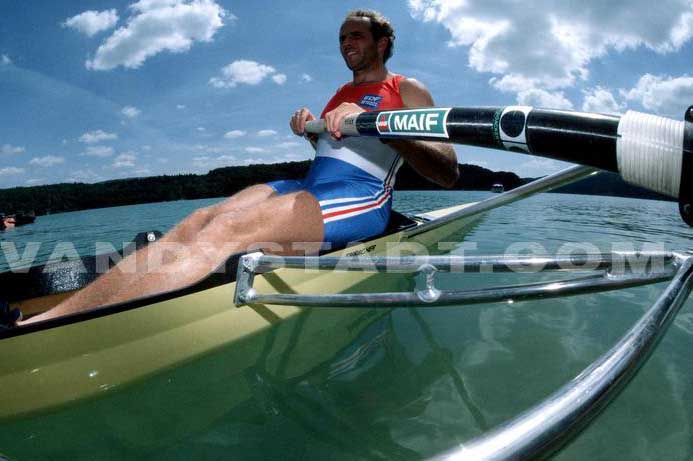
Competition
One or more rowers in a boat trying to traverse a distance in the shortest time on a lake.

Rowing is an endurance event, which ends at a speed exceeding 10 meters per second. Crews paddle the middle of 1000 meters at a rate of about 40 strokes per minute and the first 500 and last 500 meters, they have a higher speed providing up to 47 rounds per minute.
A rower has one oar in each hand in sculling oar and one for both hands in the sweep oar. The boats accommodate one, two, four or eight rowers. At eight rowers, a coxswain is responsible for directing the ship and crew but all the other boats, one rower who helm the boat with a small bar at the bottom.
The water
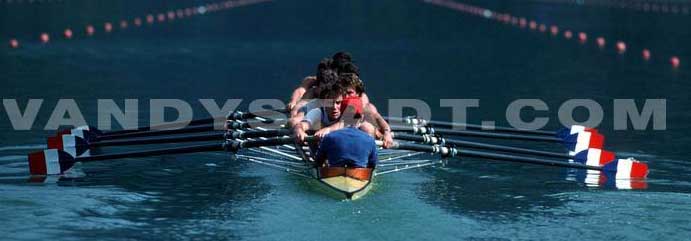
The course must be straight and have at least 6 lanes and at 8.
The championship races will compete over 2 000 meters with six lanes on the straight line defined by buoys. There are four steps up to reach the finals or heats, repechage, semi-finals and finals. The repechage include the losing teams to the playoffs, which means that each team has lost playoff gets a second chance before being eliminated. We shall draw lots after each step in alternative systems and not available in advance. The last three in each semi-final compete in the B final for places 7 to 12.
Boats

Traditionally, ships' hulls were made of wood, now they are often made of carbon fiber and plastic. They have a width of 59.70 to 62.20 cm. A small drift in the hull ensures stability. A rudder is attached to drifting or obstruction (except on vessels of torque). A white ball is attached to the bow (safety measure, photo-finish). A plank prevents waves penetrate into the boat. Seats roller slide on rails.
The boats are
· Craft shapes, sizes and free constructions,
· Rowing shells and canoes,
· The C-boat.
Shovels or paddles
The first sweeps were made of wood and shovel had a symmetrical shape. Currently, they are carbon and the shovel has an asymmetrical shape. They are hollow to reduce weight and the boat fixed by adapting. The shovel asymmetric maximize support in the water. There is no limitation on the size and shape of oars. The average length of a sweep oar is 3.81 m and 2.98 m for a sculling.

The classes of boats
There are proofs and peak torque in women and men: a sculls, two and four pair, two pair of lightweight, eight with coxswain and two coxless. Men have other tests that are four and coxless four of the coxless lightweight.
There are eight classes of boats, including five for the sweep oar when rowing rower uses only one that takes two hands and three for sculling rower when the oar is one in each hand. In some classes, there is a helmsman who is sitting in the stern, or lying on the bow of the boat.
![]()
Remember
- The single scull is a rowing boat to 1 with two oars
- The double is a pair of boat for two rowers
- The four is a leading boat for four rowers, with or without coxswain.
- Eight is a leading boat for eight rowers and a coxswain
Boats peak with an oar for each rower boats are following:
? 2 - = Coxless Pair (length 10.40 m, weight 27 kg).
? 2 + = Two with Cox (length 10.40 m, weight 32 kg).
? 4 - = Coxless Four (length 13.40 m, weight 50 kg).
? = 4 + Four with Cox (length 13.70 m, weight 51 kg).
? Eight 8 + = (length 19.90 m, weight 96 kg).
The couple boats armed with two oars per rower are:
? Skiff 1x = (length 8.20 m, weight 14kg, speed 18.20 km / h in men and 16.83 km / h in women).
? 2x = Double Sculls (length 10.40 m, weight 27 kg; speed 19.82 km / h).
? 4x = Quadruple sculls (length 13.40 m, weight 52 kg).
- In point: a paddle wielded with both hands.
- Couple: the rower has two oars.
- Skiff: a rower with two oars.
- Coxless pairs: two rowers in a point.
- Double scull: Two scullers.
- Two bars, two rowers plus a coxswain edge.
- Four Coxless four rowers to a point.
- Quad Sculls Coxless Four scullers.
- Four blocked four rowers to a point with a rower.
- Eight: eight rowers in a point with a rower.
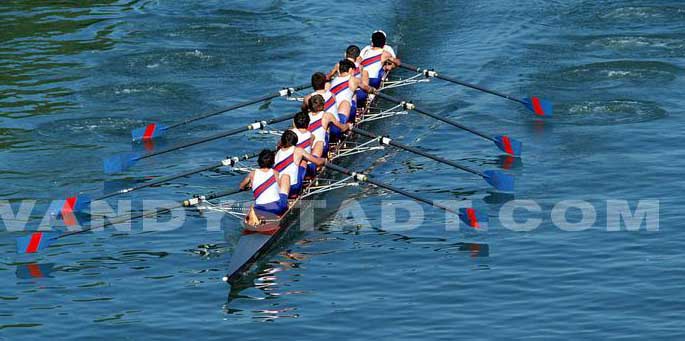
The skiff is the only ship operated by a single rower. The word 'skiff' find roots in English words and the Netherlands. It is also a derivative of Old French 'boat', a word whose roots are Italian (schifo). By extension, the word refers to small vessels.
Good to know:
- A rower spends approx. 600 calories per hour
- A rowing machine gives an average of 40 strokes per minute with a shovel during a competition against 10 shovel in training.
- A rower runs each year between 5000 and 6000 kilometers in training due to a dozen times a week about 20 km each. It also conducts periodic training on ergometers (rowing indoors) and out of intensive running, biking and skiing.








